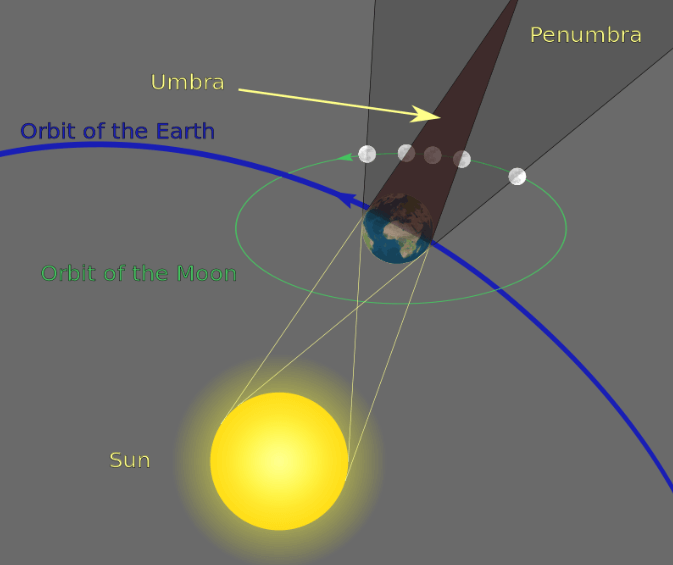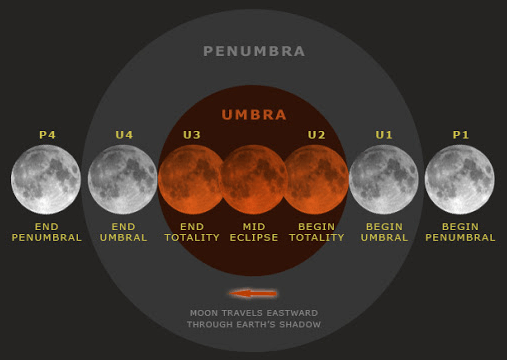ArticlesNo Comments
Moon and earth are rotating around the sun. When the earth comes in between the moon and sun than lunar eclipse occurs. Earth blocks the direct sunlight from reaching the moon. A total eclipse moon is also called a blood moon.
Shadow of the earth is divided into two parts, umbra and penumbra. Umbra which is the central region of the shadow where earth totally blocks the sunlight. The outer portion of the shadow is the penumbra, in this region, direct sunlight is partially blocked. Four types of lunar eclipse can occur. These are penumbra, lunar eclipse, partial lunar eclipse, total lunar eclipse, and central lunar eclipse.
A penumbral lunar eclipse occurs when the moon is passing through the earth’s penumbra. When the moon is lying completely inside the earth’s penumbra, then total penumbral lunar eclipse occurs. Similarly partial and total lunar eclipse occurs when a portion of the moon enters the earth’s umbra. When the moon is in the earth’s shadow, then it is a central lunar eclipse. Sun and eclipsed moon can be observed at the same time during sunset and the sunrise which is referred to as selenelion, selenehelion, or a horizontal eclipse.

There are contact points that are relative to the earth’s umbral and penumbral shadows. The timing of the lunar eclipse is determined through these contacts.
- P1: It is the first contact where the earth’s penumbra is touching the moon’s outer limb.
- U1: It is the second contact where the earth’s umbra is touching the moon’s outer limb.
- U2: It is the third contact and it is the beginning of total eclipse. The surface of the moon is totally inside the earth’s umbra. When the moon is closest to the center of earth’s umbra it is called the greatest eclipse.
- U3: It is the fourth contact and it is the end of the total eclipse. Moon’s outer limb is extending the earth’s umbra.
- U4: It is the fifth contact and it is the end of the partial eclipse. At this point earth’s umbra is leaving the moon’s surface.
- P4: It is the sixth contact and it is the end of the penumbral eclipse. There is no contact of the earth’s penumbra with the moon.

Luminosity of the lunar eclipse can be determined on the Danjon scale. It is a five-point scale that is used for measuring the appearance and luminosity of the moon, during a total lunar eclipse. It is determined through L-value. L=0 is a very dark eclipse.
- L=1 is a dark eclipse.
- L=2 is deep red or rust-colored eclipse
- L=3 is a brick-red eclipse.
- L=4 is a very bright, copper-red, or orange eclipse.

The moon does not get completely darkened because of the refraction of sunlight by the earth’s atmosphere.
A total eclipse occurs when the full moon, Sun, and earth are aligned all in a straight line. The astronomical term for this is syzygy. Lunar eclipses can be watched through the naked eye. Binoculars or a small telescope can be used to get more details of the lunar surface.



Be the first to post a comment.